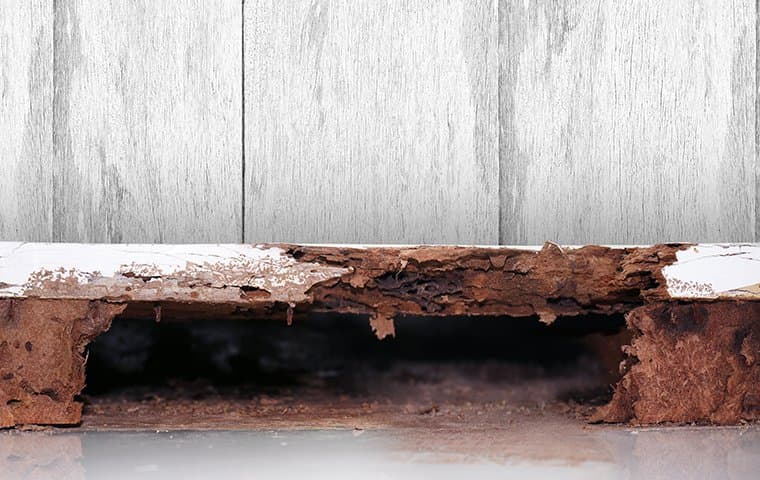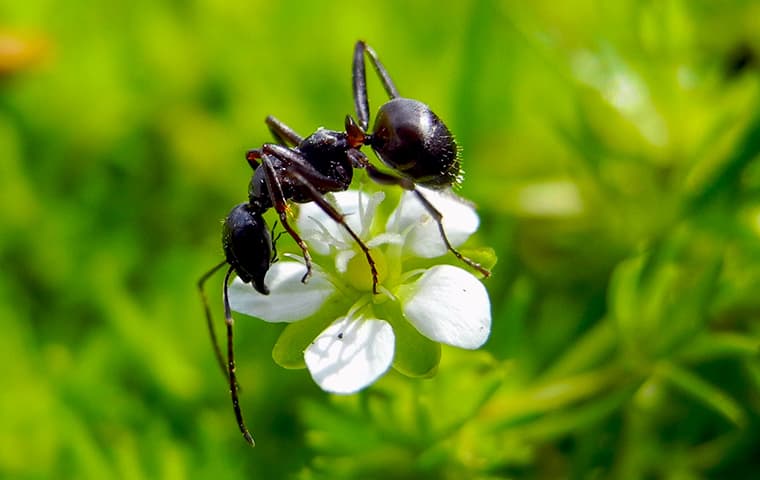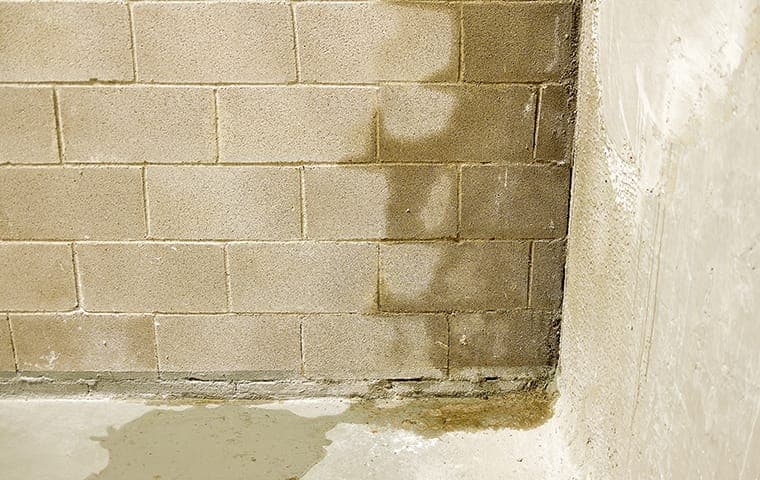How can I tell the difference between a subterranean termite infestation and a Formosan one?
One of the best ways is to compare the size and shape of the termites that you see in your home. Subterranean termites are small at 1/8th of an inch in length and whitish-yellow as nymphs, maturing to a dark brown or black coloration as adults. Formosan termites grow larger, at up to ½ an inch in length, with small mandibles, and are lighter in coloration. Next, colony size can be compared. Subterranean termite colonies typically build mud tubes connecting their underground chambers to the surface to gather water. Formosan termites differ in that they build their colonies above ground, and do not have to return to the ground, instead they are able to transport moisture to their nest using constructed cartons.
How do I know if I have a termite problem?
During seasonal peaks when termites swarm, you may see them in increased numbers on the outside of your home. You may also notice mud buildup, or tubes running along the exterior of your home. Additionally, look for cracked paint, as this can be a sign that termites have been tunneling beneath it. You can also tap along beams and boards, listening closely for any areas that may sound hollow. These steps can be repeated along the interior of the home such as crawlspaces and attics.
How much does termite control cost?
Pricing for termite control varies based on many different factors. To provide you with the most accurate quote, Havard will conduct a free inspection to determine the severity of the infestation, the size of the structure, and other factors. Based on their analysis of the situation a termite control treatment plan quote will be generated.
How do I renew my termite warranty and how much does it cost?
In order to renew your termite warranty with Havard, please schedule an annual inspection so that we can evaluate your property for termite activity.
How can I tell the difference between ants and termites?
Termites have straight antennae, thick waists, and equal-length wings. Ants have elbowed antennae, narrow waists, and uneven wings. A pest control technician can help confirm which you’re dealing with and recommend proper treatment.
How do I know if I have bed bugs?
The most common sign of bed bugs is the appearance of multiple bites on a host. These bites are usually grouped together and can form a raised red rash that is often confused with allergies or skin conditions. Other signs include visible feces, exoskeletons, and egg casings left behind by the bed bugs themselves. Look for discoloration or staining on sheets caused by feeding.
Bed bugs feed on blood and require a blood meal in order to lay their eggs, because of this, they will often nest close to their host. Inspect the seams of your mattress and bed frame looking for signs of bed bugs. Next, move outwards around the room, focusing on upholstered furniture, cracks in furniture, in and behind dresser drawers, and behind electrical outlet covers.
Are bed bugs a seasonal pest problem?
While bed bugs are not considered a traditional seasonal pest, they do seem to have a breeding season which peaks in August. Some studies suggest that this peak involves not only the breeding season of the insect but the time at which people are most likely to move, therefore spreading them inadvertently.
How long will bed bugs live without a blood meal?
Adult bed bugs can survive several months up to a year without feeding, depending on the temperature and environment. In cooler conditions, their metabolism slows down, allowing them to live longer without a blood meal. However, in warmer environments, they are more active and may only survive a few months without feeding. Younger bed bugs typically can’t survive as long without a host. Even without a blood source, bed bugs can remain hidden and dormant, which is why professional treatment is essential to fully eliminate an infestation.
What causes moisture issues in crawl spaces?
Moisture control issues are usually caused by poor ventilation, or by blocked ventilation ducts. Our technicians will identify these problems for you as part of your treatment plan.
Do moisture issues attract termites?
Areas containing high humidity levels and damp or rotting wood attract subterranean termites. Damp wood is also easier for termites to burrow into. Because areas with moisture control issues are usually areas of the home that are not frequented on a regular basis, such as crawlspaces, an infestation may take hold easily.
What is brown rot and white rot?
Brown and white rot are classified as wood decay caused by fungi. Brown rot seems to attack coniferous wood types, such as pine which is a common building material. The decay pattern of brown rot is usually brown in coloration and has a crumbly texture. White rot tends to affect hardwoods and can make the wood appear bleached. White rot may cover an entire board, making it look bleached and stringy, or can affect small pockets of the wood.
If I find a wild animal in my attic or crawlspace, what should I do?
If you believe that you have a raccoon, snake, feral cat, or skunk on your property, do not attempt to remove the animal yourself. All of these animals are capable of administering a strong bite that may require medical attention.
Is it safe for me to clean up droppings?
Animals such as squirrels, rodents, and other wildlife are all subject to various parasitic and bacterial infections that can be transferred to humans. Because of this, we do not recommend that you attempt to clean up waste on your own. Havard offers wildlife clean-up services that will take care of this task for you, limiting the risk of contamination to both your family and your home.
What health risks are associated with wildlife in Alabama, Louisiana, and Mississippi?
One of the most serious health concerns associated with wild animals entering your home is the serious risk of contracting rabies from an infected animal. If you see a nocturnal animal such as a raccoon or skunk wandering in daylight, acting disoriented, disheveled, or otherwise strangely, do not attempt to corner or catch it. A wildlife control officer or other professional should be immediately contacted to remove the animal.
What does Havard offer for commercial bird control?
Havard provides humane bird control to rid your property of pigeons, geese, woodpeckers, and other pest birds. We use proven effective techniques such as bird netting to remove the pests from your property. This is especially important when dealing with protected birds such as woodpeckers, which are not permitted to be exterminated by law. We also may install bird spikes as a preventative measure to keep pigeons, swallows, sparrows, and other small birds from roosting and nesting in your buildings. These spikes come in a wide variety of sizes that are customizable for your needs. We also offer shock tracks, which are another very effective way of keeping birds from landing on roof peaks, ledges, and beams. Shock tracks are extremely low profile, making them excellent for high visibility areas. Our technicians will discuss all options with you at the time of inspection and provide recommendations for treatment as needed.
What attracts cockroaches to my home or business?
Cockroaches are drawn to food crumbs, spills, garbage, standing water, and dark hiding places. Even clean spaces can become infested if there’s moisture, clutter, or easy entry points like cracks and gaps in walls or cabinets.
What are common signs of a rodent problem?
Droppings, gnaw marks on wires or food packaging, scratching noises at night, grease trails along walls, and nesting materials (shredded paper or fabric) are key indicators of mice or rats in your space.
What do fleas look like, and can they infest homes without pets?
Fleas are tiny, reddish-brown, wingless insects that jump. While pets are common carriers, fleas can enter homes on clothing or furniture and infest carpets, bedding, and upholstery—even without a current pet in the home.
When is mosquito season, and how long does it last?
Mosquito season usually begins in spring and peaks during the warm, humid summer months. In southern regions, activity can start as early as March and last through October. Regular treatments during this time help keep populations under control.
How can I get rid of mosquitoes around my home or business?
To reduce mosquitoes, eliminate standing water (birdbaths, buckets, gutters), trim overgrown vegetation, and use mosquito-repelling plants or outdoor fans. For long-term control, professional mosquito treatments can target breeding areas and reduce the population effectively.
Are mosquito control treatments safe for kids and pets?
Yes. Licensed pest control companies use EPA-approved products and apply them in ways that minimize risk to people and pets. Treatments are typically low-toxicity and safe after drying. Always follow your technician’s post-treatment instructions.











